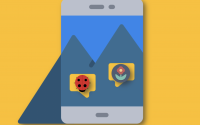
TIME FOR CLASS: COVID-19 EDITION, PART 2
This is the second report in an ongoing series designed to understand the ongoing impact of the COVID-19 pandemic on teaching and learning in higher education; it serves as a follow-up to our first report, Time for Class – A National Survey of Faculty During COVID-19, which was released in early July. The current report […]
















